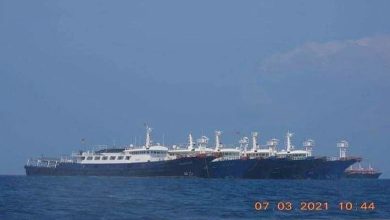Overcoming challenges in the Philippine logistics and transport sector

The transport and logistics industry has become one of the most powerful economic engines in the country.
According to a report published by Ken Research, the logistics industry contributes 4 to 6% to the country’s gross domestic product (GDP). Because of this, the Philippine logistics market is expected to grow at a compound annual growth rate of 8.2% from 2022 to 2027, reaching a market size of P1.160 trillion by 2027.
Despite this progress, the sector still faces significant challenges that could impede its continuous growth. According to the National Economic and Development Authority, the country must improve its infrastructure and technology adoption, especially in rural areas, to remain competitive in the global market.
Efficient and well-functioning logistics and transportation systems are essential for facilitating trade, connecting people, and promoting economic growth. To achieve these goals, the government and private sector should collaborate and invest in infrastructure, adopt modern technologies, and implement reforms to enhance the efficiency of the transport and logistics sector in the Philippines.
Technology and sustainability
The global transport and logistics industry is undergoing a significant transformation driven by the adoption of various technologies. These advancements aim to address the complex challenges faced by transportation and logistics companies, including economic, geopolitical, and environmental obstacles.
However, the industry here in the Philippines still faces challenges in fully realizing the potential of technology. In fact, the country still relies heavily on manual processes and human resources. Based on a report published by S&P Global Market Intelligence, one of the main inhibitors in the industry is the shortage of skilled workers, which can be partially solved by adopting digital-enabling technologies.
On the other hand, businesses are seizing more opportunities presented by the country’s growing commercial activity, particularly in e-commerce. According to the YCP Solidiance, the e-commerce industry accounted for 2% of the Philippine total retail market in 2020, and it is predicted to reach 7% of the total market share in the near future. As demands for effective and transparent logistics services keep increasing, this condition can be nurtured should it go hand in hand with technology development in the industry.
Meanwhile, as the Philippines is a rapidly developing country with a growing population and economy, its continued development has to come with an accompanying cost, with increasing pollution and greenhouse gas emissions. The transport and logistics industry is heavily reliant on fossil fuels, contributing to environmental degradation and making businesses vulnerable to the volatile global oil market.
To address this, the country has begun exploring low-carbon transport options that can reduce emissions while still meeting the needs of its citizens. A report from the United Nations Development Programme reveals that sustainable mobility has been integrated into the annual fiscal budget of the Philippine government since 2021.
In addition, the UNDP is working on a joint initiative with the Department of Transportation (DOTr) to promote Low Carbon Urban Transport Systems in the Philippines (LCT). The project encourages low-carbon transportation by developing policies, building capacity, and facilitating private-sector participation.
Infrastructure development and inclusivity
The Philippines has been lagging behind many neighboring countries in infrastructure development. Roads, ports, and airports, especially in rural areas, often lack the modern technology needed for efficient transportation and distribution.
The government and private sector have consequently increased their spending on large-scale projects in recent years. The ‘Build, Better, More’ program of the government includes large-scale infrastructure developments focusing on transportation, water resources, and energy.
Out of the 76 transport and mobility projects, 12 are being funded by the government, while 35 projects are being or will be funded by development aid. The remaining 24 projects are under the Public-Private Partnership (PPP) model, including 20 unsolicited proposals.
Transportation and logistics have facilitated commerce in the Philippines by enabling the transportation of goods and people across distances. But such challenges still need to be resolved to guarantee inclusivity in the transportation sector.
According to a study published in the open-access journal Sustainability, the Philippines faces several challenges in the transportation sector, including poor quality of the road network, poor intermodal connectivity, and inadequate public transport services. These challenges make it difficult for people to access essential services, such as healthcare and education, and limit economic opportunities for many Filipinos.
Designing transportation and logistics systems with inclusivity in mind creates equitable and accessible systems that work for everyone. Based on a report published by McKinsey, investments in accessible public transportation, rural connectivity, and job opportunities in the sector can contribute to reducing income inequality and improving people’s overall quality of life. — Mhicole A. Moral




